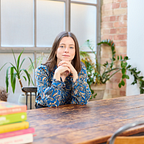Smedvig Capital & Landscape: Getting frank about Series A
On Wednesday 28th July Smedvig Capital partnered with Landscape for a discussion on all things Series A. The conversation was mediated by Joe Perkins, Founder of Landscape who was joined by Smedvig’s Senior Associate, Peter Duffy, Phil Zeidler (Founder of Dead Happy) and Evgeny Shadschnev (Founder of Makers). The panel discussed everything from preparing to fundraise to approaching investors and signing term sheets. Check out a few of the key takeaways below:
How can you prepare for Series A?
1. Have a Clear pitch deck that outlines the problem, your solution, competitors, and the market. Structurally it will be similar to your Seed round deck in that it will have all the cornerstones of evaluating a business (product, market, economics, team etc), but it will need to be a lot more detailed. Seed is about concept and opportunity. At Series A, you need to prove out product market fit, and investors will want to see evidence of this such as revenue and customer traction.
2. Prepare a key set of metrics or KPIs that you know investors are going to want to see. Such as revenue, customer growth, margins, churn, and retention. These should be key drivers for your business so it’s more than likely that you’re tracking them already, this means pulling them together should be relatively straight forward. They can be presented in the pitch deck or in a separate data room.
3. Create a shortlist of VCs that you think are going to be a good fit for the business. Spend time thinking about what sort of investor you’re looking for (big fund or sector specific? More passive or proactive? Operating partners or a smaller, focussed investment team?) and what you want from this round? (E.g., support with internationalisation, help on key hires etc)
4. Use your seed investor for support, insight, and introductions. It’s also important to establish whether they will want to follow on before you go out to fundraise.
When is the right time to start approaching investors?
For Smedvig, the perfect process is where we’ve known the company for at least a year before the fundraise. At that point we’re not doing diligence but we’re getting a sense of the business and building relationships with the Founders. During that year, ideally, we’ll have a couple of check-ins to see how the business is progressing and build on those foundations. It allows us to do a bit of groundwork and sometimes pre-empt the fundraise, meaning the company doesn’t always have to run a ‘formal process.’ Having said that, as a Founder you do need a balance and you don’t want to close your seed round then go straight back out and start talking to VCs again. But it’s always good to stay in touch with a few key funds that you like.
What qualities do Founders look for in a VC at Series A?
Phil and Evgeny agreed that the main quality that many Founders look for at Series A is a partner that they believe will support them through the ups and downs of growing a business.
If you could give one bit of advice for raising Series A — what would it be?
Phil: Don’t get tied up in projecting perfect financial projections for the next 5 years, there’s no point. You need to have a direction of travel, but the truth is it will be wrong. Focus on the cornerstones of the business: KPI’s, growth, team, market, and product.
Evgeny: Try to consider how the fundraise will be in the post covid world. There are some obvious changes, for example the use of Zoom and processes generally moving faster. However, there are also some less obvious changes to consider such as, how you come across in a Zoom call might not be how you would make an impression in a board room. So, do you need to practice more or hire a coach?
Peter: Get materials ready ahead of the raise. Pitch deck, outline of vision, evidence of traction, the size of opportunity. It will save you time and also pre-empts VCs questions meaning you avoid the ‘can we see some evidence of this?’. Secondly, if you’re looking to raise in Q4 this year (for example), start short-listing VCs now that you think will be a good match for you and your business.
